1. Burke GW, Ciancio G, Sollinger HW. Advances in pancreas transplantation. Transplantation. 2004; 77(9 Suppl):S62–S67. PMID:
15201688.

2. Gillard P, Vandemeulebroucke E, Keymeulen B, Pirenne J, Maes B, De Pauw P, et al. Functional beta-cell mass and insulin sensitivity is decreased in insulin-independent pancreas-kidney recipients. Transplantation. 2009; 87:402–407. PMID:
19202446.
3. Gruessner RW, Sutherland DE, Kandaswamy R, Gruessner AC. Over 500 solitary pancreas transplants in nonuremic patients with brittle diabetes mellitus. Transplantation. 2008; 85:42–47. PMID:
18192910.

4. Dean PG, Kukla A, Stegall MD, Kudva YC. Pancreas transplantation. BMJ. 2017; 357:j1321. PMID:
28373161.

5. Niederhaus SV, Kaufman DB, Odorico JS. Induction therapy in pancreas transplantation. Transpl Int. 2013; 26:704–714. PMID:
23672537.

6. Sutherland DE, Gruessner A. Longterm function (> 5 years) of pancreas grafts from the International Pancreas Transplant Registry database. Transplant Proc. 1995; 27:2977–2980. PMID:
8539798.
7. Martin X, Feitosa Tajra LC, Benchaib M, Dawahra M, Lefrançois N, Dubernard JM. Long-term outcome of pancreas transplantation. Transplant Proc. 1997; 29:2423–2424. PMID:
9270792.

8. Sudan D, Sudan R, Stratta R. Longterm outcome of simultaneous kidney-pancreas transplantation: analysis of 61 patients with more than 5 years follow-up. Transplantation. 2000; 69:550–555. PMID:
10708110.
9. Lo A, Stratta RJ, Hathaway DK, Egidi MF, Shokouh-Amiri MH, Grewal HP, et al. Long-term outcomes in simultaneous kidney-pancreas transplant recipients with portal-enteric versus systemicbladder drainage. Am J Kidney Dis. 2001; 38:132–143. PMID:
11431193.

10. Burke GW 3rd, Kaufman DB, Millis JM, Gaber AO, Johnson CP, Sutherland DE, et al. Prospective, randomized trial of the effect of antibody induction in simultaneous pancreas and kidney transplantation: three-year results. Transplantation. 2004; 77:1269–1275. PMID:
15114097.
11. Farney AC, Doares W, Rogers J, Singh R, Hartmann E, Hart L, et al. A randomized trial of alemtuzumab versus antithymocyte globulin induction in renal and pancreas transplantation. Transplantation. 2009; 88:810–819. PMID:
19920781.

12. Stegall MD, Kim DY, Prieto M, Cohen AJ, Griffin MD, Schwab TR, et al. Thymoglobulin induction decreases rejection in solitary pancreas transplantation. Transplantation. 2001; 72:1671–1675. PMID:
11726830.

13. Katz H, Homan M, Velosa J, Robertson P, Rizza R. Effects of pancreas transplantation on postprandial glucose metabolism. N Engl J Med. 1991; 325:1278–1283. PMID:
1922222.

14. Robertson RP, Sutherland DE, Kendall DM, Teuscher AU, Gruessner RW, Gruessner A. Metabolic characterization of long-term successful pancreas transplants in type I diabetes. J Investig Med. 1996; 44:549–555.
15. Shin S, Jung CH, Choi JY, Kwon HW, Jung JH, Kim YH, et al. Long-term metabolic outcomes of functioning pancreas transplants in type 2 diabetic recipients. Transplantation. 2017; 101:1254–1260. PMID:
27336397.

16. Dieterle CD, Arbogast H, Illner WD, Schmauss S, Landgraf R. Metabolic followup after long-term pancreas graft survival. Eur J Endocrinol. 2007; 156:603–610. PMID:
17468197.

17. Lauria MW, Figueiró JM, Machado LJ, Sanches MD, Nascimento GF, Lana AM, et al. Metabolic long-term follow-up of functioning simultaneous pancreas-kidney transplantation versus pancreas transplantation alone: insights and limitations. Transplantation. 2010; 89:83–87. PMID:
20061923.

18. Bae EJ. DPP-4 inhibitors in diabetic complications: role of DPP-4 beyond glucose cont rol. Arch Pharm Res. 2016; 39:1114–1128. PMID:
27502601.
19. Stonehouse AH, Darsow T, Maggs DG. Incretin-based therapies. J Diabetes. 2012; 4:55–67. PMID:
21707956.

20. Singh B, Saxena A. Surrogate markers of insulin resistance: a review. World J Diabetes. 2010; 1:36–47. PMID:
21537426.

21. Shin S, Han DJ, Kim YH, Han S, Choi BH, Jung JH, et al. Long-term effects of delayed graft function on pancreas graft survival after pancreas transplantation. Transplantation. 2014; 98:1316–1322. PMID:
24839896.

22. Shin D, Eom YS, Chon S, Kim BJ, Yu KS, Lee DH. Factors influencing insulin sensitivity during hyperinsulinemic-euglycemic clamp in healthy Korean male subjects. Diabetes Metab Syndr Obes. 2019; 12:469–476. PMID:
31114276.
23. Kang ES, Yun YS, Park SW, Kim HJ, Ahn CW, Song YD, et al. Limitation of the validity of the homeostasis model assessment as an index of insulin resistance in Korea. Metabolism. 2005; 54:206–211. PMID:
15690315.

24. Patil DT, Yerian LM. Pancreas transplant: recent advances and spectrum of features in pancreas allograft pathology. Adv Anat Pathol. 2010; 17:202–208. PMID:
20418674.
25. Triñanes J, Ten Dijke P, Groen N, Hanegraaf M, Porrini E, Rodriguez-Rodriguez AE, et al. Tacrolimus-induced BMP/SMAD signaling associates with metabol ic stress-act ivated FOXO1 to trigger β-cel l fai lure. Diabetes. 2020; 69:193–204. PMID:
31732500.
26. Shimizu S, Hosooka T, Matsuda T, Asahara S, Koyanagi-Kimura M, Kanno A, et al. DPP4 inhibitor vildagliptin preserves β-cell mass through amelioration of endoplasmic reticulum stress in C/EBPB transgenic mice. J Mol Endocrinol. 2012; 49:125–135. PMID:
22822047.

27. Galindo RJ, Fried M, Breen T, Tamler R. Hyperglycemia management in patients with posttransplantation diabetes. Endocr Pract. 2016; 22:454–465. PMID:
26720253.

28. Drucker DJ, Nauck MA. The incretin system: glucagon-like peptide-1 receptor agonists and dipeptidyl peptidase-4 inhibitors in type 2 diabetes. Lancet. 2006; 368:1696–1705. PMID:
17098089.

29. Ergin AB, Poggio E, Krishnamurthi V, Jaber T, Hatipoglu BA. DPP-4 inhibitor therapy in patients after pancreatic transplant. Endocr Pract. 2015; 21:567–573. PMID:
25667364.

30. Kim YS, Oh SH, Park KS, No H, Oh BJ, Kim SK, et al. Improved outcome of islet transplantation in partially pancreatectomized diabetic mice by inhibition of dipeptidyl peptidase-4 with sitagliptin. Pancreas. 2011; 40:855–860. PMID:
21747318.

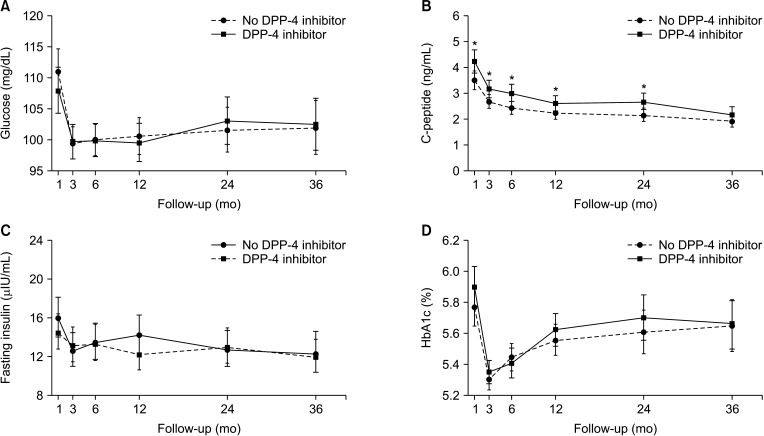
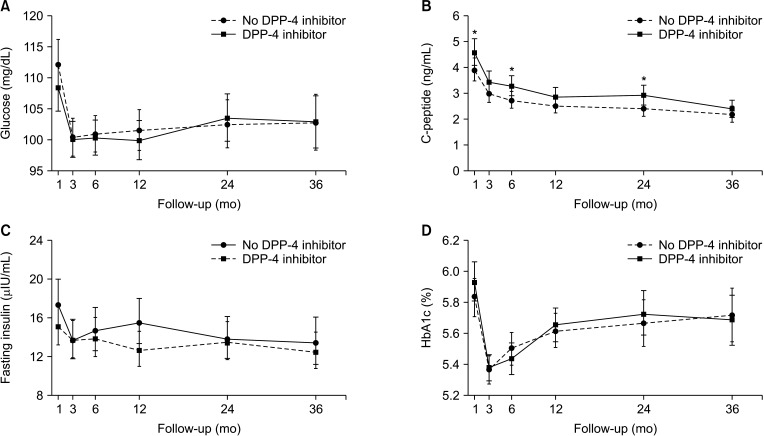
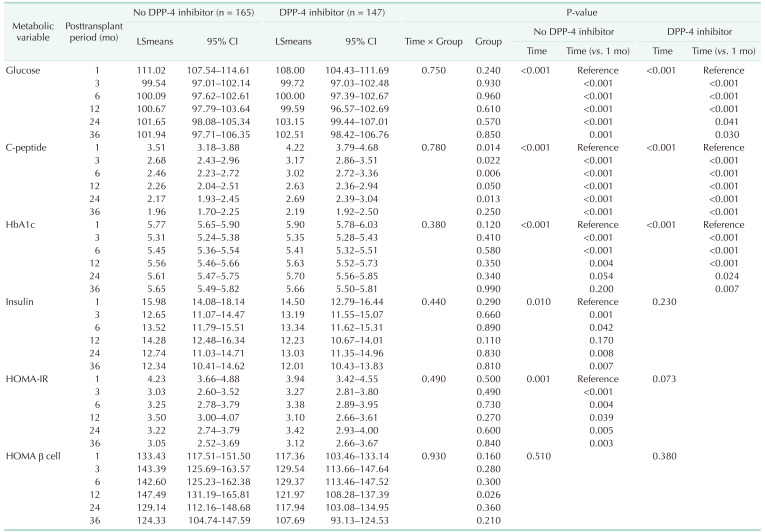
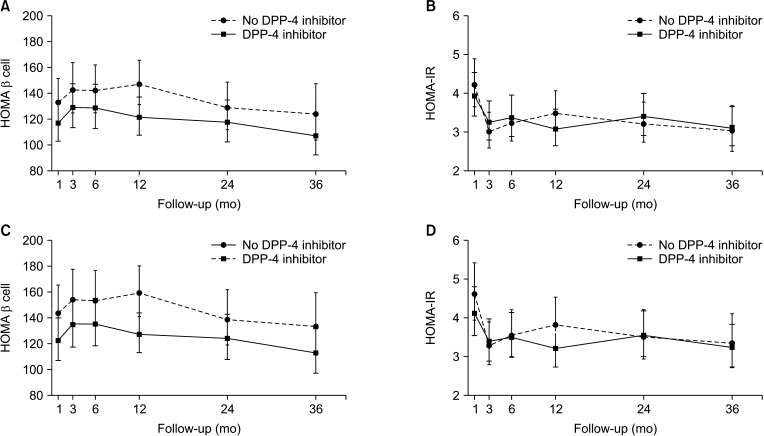




 PDF
PDF Citation
Citation Print
Print



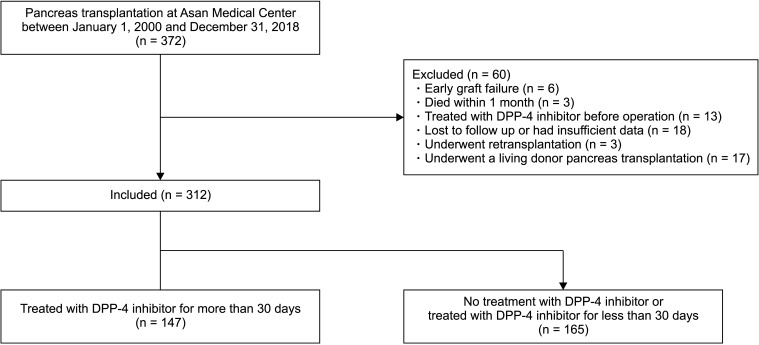
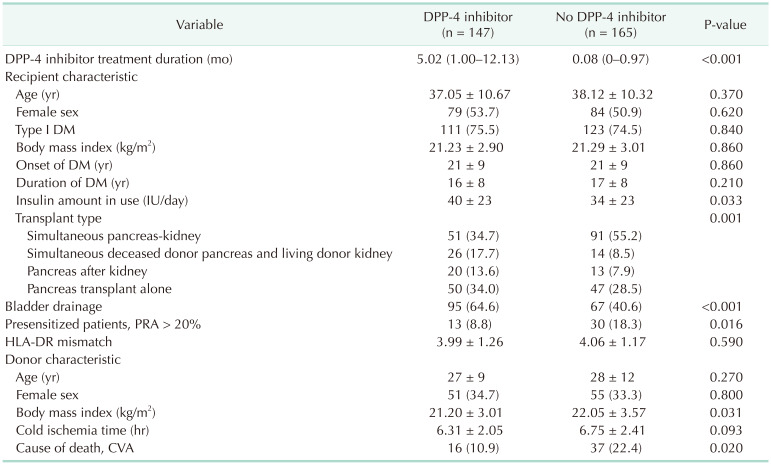
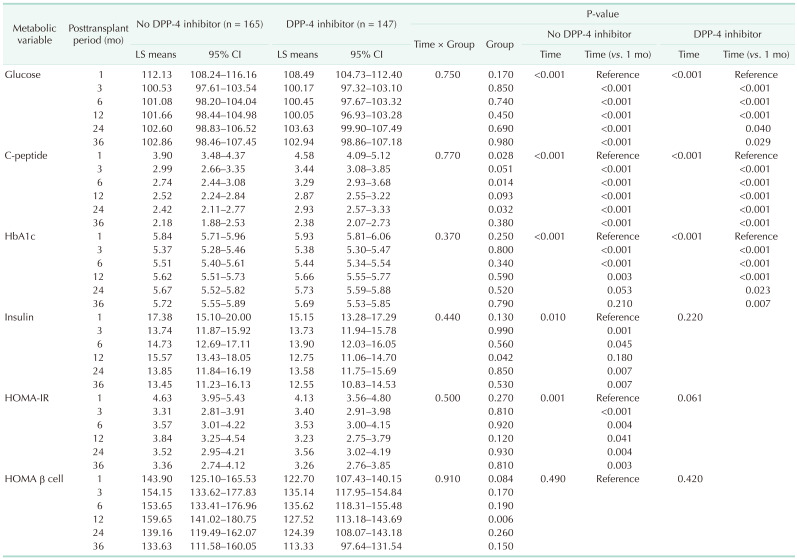

 XML Download
XML Download